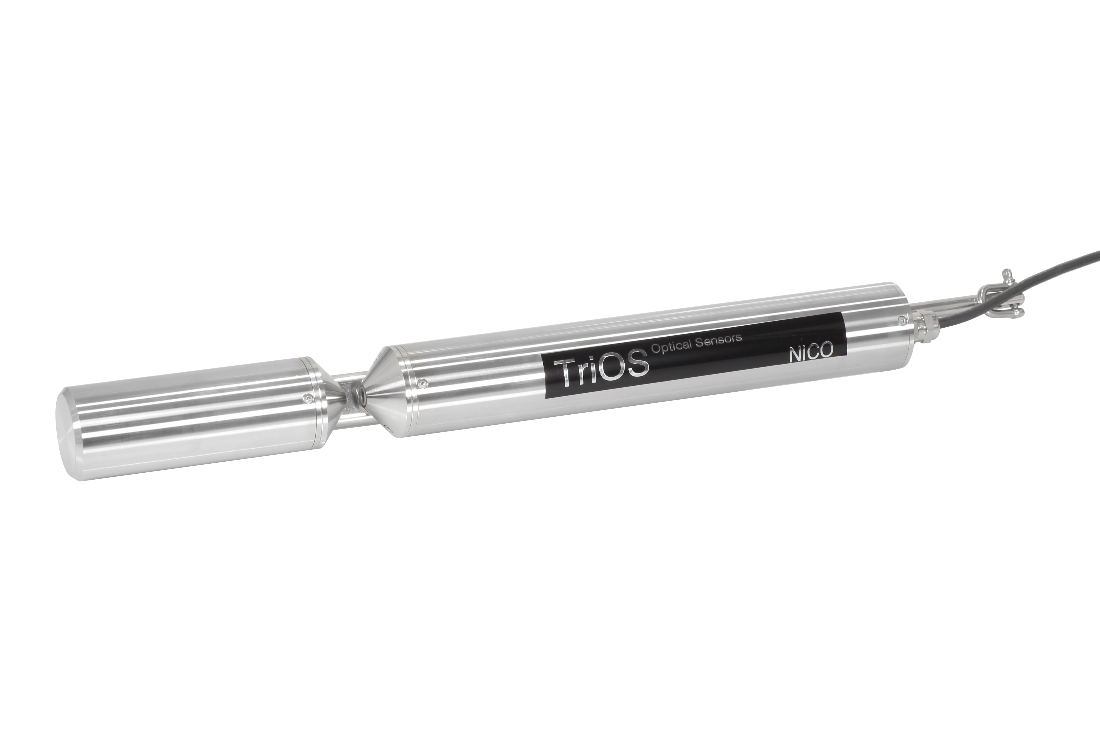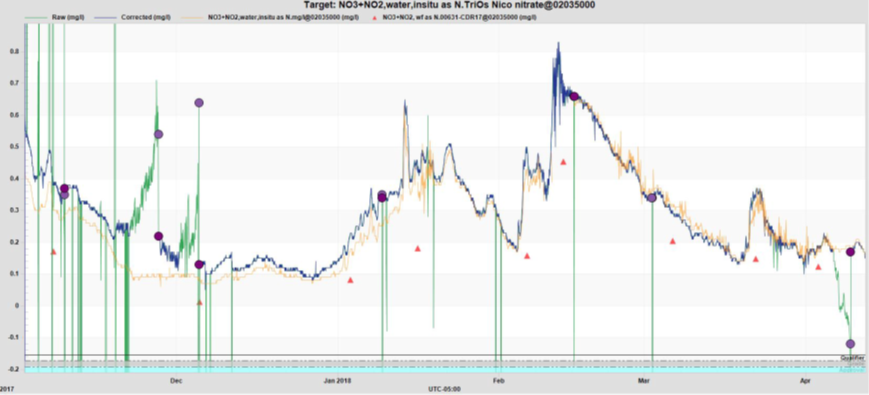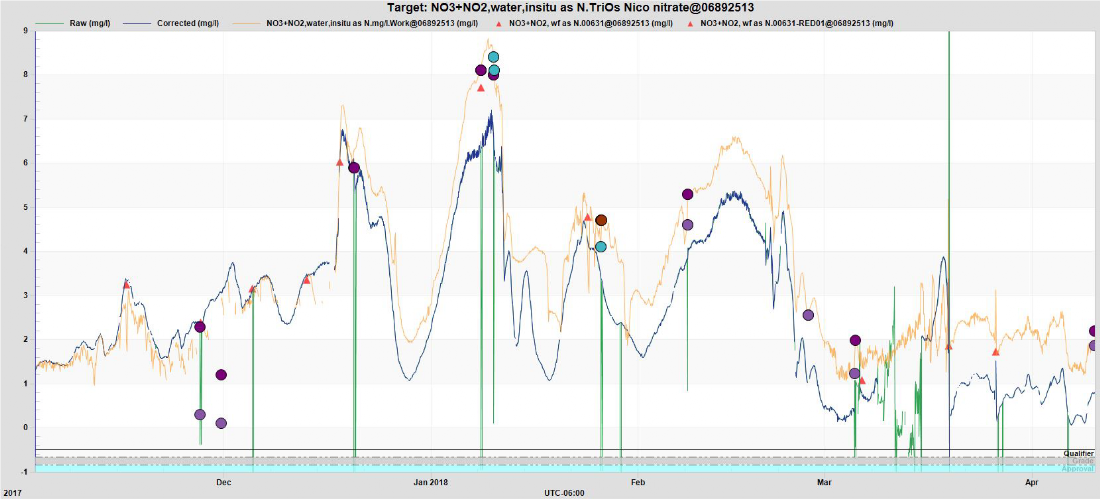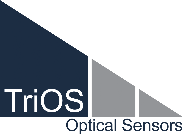Field operation of NICO
nitrate measurements in surface waters





Application Description
Two renowned scientific institutions in the USA, the U.S. Geological Survey (USGS) Virginia and West Virginia and the Kansas Water Science Centre, analysed the suitability of the NICO nitrate sensor in field operation in surface waters from October 2017 until April 2018 in cooperation with OTT HydroMet.
For this purpose a NICO sensor was placed in two different watercourses: James River near Cartersville (Virginia) and Mill Creek at Johnson Drive in Shawnee (Kansas).
Task
Both trial installations had the purpose of assessing the NICO performance under differing conditions regarding flow, season (incl. winter with ice cover), nitrate concentration and type of installation. For comparison, sensors from two competitors were also installed.
Installations
The installation at James River was done using a movable slide on a rail system, which was attached to a bank of the river. The TriOS NICO including the wiper cleaning system was installed next to a SUNA probe by Seabird, which featured a brush cleaning system.
At Mill Creek the NICO probe was installed suspended from a bridge and guided through a PVC pipe into the water, next to a NITRATAX plus sc by HACH. Both sensors featured a wiper cleaning system.
At both sides, the sensors were connected to a SatLink3 data logger by Sutron. The NICO communication was performed directly through the RJ485 interface via MODBUS RTU. The following measurement cycle was programmed on the SatLink3 data logger:
- The power supply for the NICO probe and wiper is turned on 90 s before measurement and a wiping process is triggered.
- 15 s after turning the power on, the wiper power supply is turned off again.
- After 75 s a nitrate measurement is triggered, nitrate and the quality index is read.
- In case a measurement delivers no result, an error code is put out.
- After 90 s the NICO power supply is turned off.

Test Results James River
The trial installation at James River started out challenging. Debris such as leaf residue in the measuring gap blocking the wiper, distorted the results and let them drift upwards (as seen in graph). After a manual cleaning and repair of the wiper, the results reverted to accurate levels. By turning the probe into the opposite direction of the water flow this problem could be resolved. Another initial issue was frequent measurement value loss in the first phase of the trial. An analysis of the software version of the NICO prototype revealed that single measurements were distorted due to solid matter caught in the measurement gap, which caused fault signals. Subsequently, the software was modified and the output value is now calculated as an average from multiple single measurements with an elimination of outliers.

Nitrate data of the NICO sensor over time with raw data (green) and processed data (blue) in comparison with the SUNA sensor (yellow) and lab values (red triangle). Violet dots show the read values of NICO before and after a manual cleaning.
After the elimination of both error sources the NICO sensor produced stable signals in a range between 0.05 and 0.80 mg/l NO3-N. The comparison to the Seabird SUNA showed a minor deviation in the first half of the trial period, but was not registered after the wiper repair and thorough manual cleaning of the measurement windows in January anymore. From that date, both probes continuously delivered almost identical results until the end of the trial period. Particular attention should be given to the storm incident with flooding, which occurred February 9-14 and caused turbidity values of 500 FNU. Despite these challenging conditions (strong currents and turbidity) the NICO sensor was able to deliver reliable data whereas the wiper of the SUNA probe was blocked, which led to a loss of data for the rest of the trial period.
Comparative lab measurements of single samples showed slightly lower results. This small systematic difference however was evaluated as typical due to the measured value subordination to the cross profile of this water.
Test Results Mill Creek
The trial installation of a NICO sensor at Mill Creek proceeded reliably without any special events over the entire trial period from November 2017 until April 2018. The nitrate concentrations ranged between 0.2 and 9.0 mg/l NO3-N.
One exception occurred at 5 March when a loose wiper blade was partially blocking the measurement gap. All other short-time surges were caused by maintenance works.
A comparison between the NICO probe and the NITRATAX plus sc shows good data agreement at the beginning of the trial period. However, the NITRATAX probe broke down in November and had to be replaced by a rental device. From this point onwards the measurement values of the NITRATAX were generally higher than the NICO values.
The comparative lab measurements from discrete samples largely validated the NICO data. The somewhat larger deviation on 8 January could be explained by an exceedance of the measurement range. With 10 mm the sensor’s path length was too big for this application and for a permanent installation at this site a 5mm path-length would be recommended.

Nitrate hydrographs of the NICO sensor raw data (green) and processed data (blue) in comparison to the NITRATAX sensor (yellow) and lab values (red triangle).
Conclusion
The NICO sensor evaluation of both research institutes involved was positive throughout.
In conclusion the NICO sensor was found to be reliable and easy to handle. The NICO sensor was operating stable over a range of temperatures and was unaffected by surface ice cover on the water. With only a few explicable exceptions the measurement data correlated well with the daily trends of the reference sensors and lab data. The maintenance requirements proved to be rather low. Similar to the other manufacturer’s sensors, manual cleaning had to be carried out occasionally to remove severe blockage of the optical path by debris and sediment.
Only the initial construction of the wiper, which caused issues due to loose or lost wiper blades, led to a request for an improvement. This was already implemented by TriOS.

